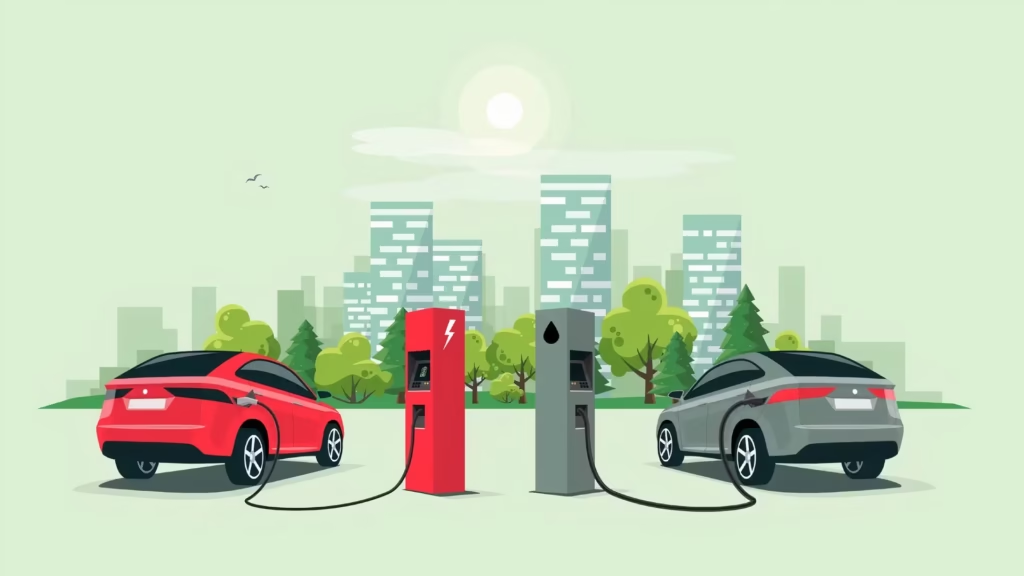India is accelerating EV adoption with its burgeoning population, fast-growing middle class, and city jamming, is at the crossroads in its transport revolution. The transition to electric vehicles is an environmental and economic strategic imperative. This article offers a close examination of India’s present situation, policy changes of the last few years, and market trends of the EV space.
Government Initiatives
- PM E-DRIVE Scheme: In September 2024, the Government of India released the PM Electric Drive Revolution in Innovative Vehicle Enhancement (PM E-DRIVE) Scheme on an outlay of ₹10,900 crore to induce EV adoption. The two-year programme encourages the purchase of electric two-wheelers, three-wheelers, e-trucks, e-buses, and e-ambulances, in addition to charging public infrastructure creation.
- SPMEPCI Policy: The Scheme for Promotion of Manufacturing of Electric Passenger Cars in India (SPMEPCI), launched in March 2024, aims to make India one of the world’s major EV manufacturing hubs. The policy ensures a minimum investment of ₹4,150 crore and an in-country value addition of 25% in the third year, increasing to 50% in the fifth year. Businesses that participate receive incentives in the form of lower customs duty.
- FAME India Scheme: The Faster Adoption and Facilitation of (Hybrid &) Electric Vehicles in India (FAME) program has been central to EV adoption. Phase EMPS 2024 follows FAME II with a budget of ₹5 billion till July 2024, focusing mainly on electric three-wheelers and two-wheelers.
- New EV Policy (2024): The government of India recently approved a fresh EV policy to make India a world manufacturing centre. The move aims to cut import tariffs on EVs with CIFs of USD 35,000 and more to 15%. Companies must invest at least ₹4,150 crore, and concessional terms will be granted for the import of 8,000 EVs in a year. The move is intended to attract global giants such as Tesla.
- Production Linked Incentive (PLI) Scheme: The PLI scheme continues to favour domestic manufacturing, attracting investment from global and domestic players based on next-generation auto technology and battery storage.
- Union Budget 2025: The Finance Minister waived the duty to import capital goods used to produce lithium-ion batteries for 15 battery-producing companies.
Market Dynamics
Sales Growth
Electric vehicle sales in India reached 1.95 million units in 2024, a 27% rise from 1.53 million units in 2023. The increase is due to government subsidies, growing consumer consciousness, and enhancement of EV infrastructure.
Segment Developments
- Two-Wheelers: Dominated the market with a market share of nearly 59% of total EV sales in 2024. Players such as Ola Electric and TVS Motor Company dominated the segment.
- Four-Wheelers: The electric vehicle segment grew 20% in 2024 to almost 100,000 units. Tata Motors dominated the market with 61,496 units sold.
Infrastructure and Investments
- Charging Infrastructure: India had 12,146 public charging points for EVs as of February 2024. The Confederation of Indian Industry (CII) aims at 1.32 million stands by 2030.
- Manufacturing Investments: Local and overseas companies have put in more than ₹3.4 lakh crore in India’s EV and allied industries within the next six years.
Consumer Perception and Environmental Impact
- Awareness and Acceptance: EVs have robust acceptance among consumers supported by government support and trendsetter features like intelligent TFT displays from Kinetic Green.
- Cultural Shift: City consumers are now adopting EVs, supported by corporate initiatives toward sustainability.
- Environmental Objectives: India’s EV drive aligns with its objective of becoming net zero by 2070, lowering air pollution and oil imports.
Recent Developments
- Maharashtra’s Planned Ban: A committee is considering a possible ban on petrol and diesel cars in Mumbai and the MMR area, encouraging CNG and EV uptake.
- EV Import Scheme Workshop: The government is organizing workshops to generate interest in its EV import scheme, making premium EVs available at lower tariffs.
- Investment Growth: With increasing global interest, organisations continue investing in EV production and supply chain infrastructure.
Future Prospects
- Policy Stability: Policy stability, ongoing incentives, and infrastructure investment will be critical to the success of India’s shift to EVs.
- Technical Upgradation: Battery technology advancement and intertie with renewable power will lead to future growth.
- Global Aspirations: India has aspirations to be a leading EV exporter for the world as per ‘Make in India’.
Conclusion
India’s dedication to electric vehicles is seen through its latest policy reforms, investments, and fast-growing market. Although there are still infrastructure deficiencies and consumer adoption issues, the nation is moving slowly towards sustainable transport. If the pace is maintained at this level, India can transform urban transport into one of the largest car markets in the world.


3 Comments
Pingback: India Energy Week 2025 Concludes: Cementing India's Position as a Global Energy Leader - Greenisthefuture
Pingback: Japan Pledges Historic 60% Emissions Cut by 2035 - Greenisthefuture
Pingback: India's EV Market Set to Surpass 28 Million by 2030: Report - Greenisthefuture